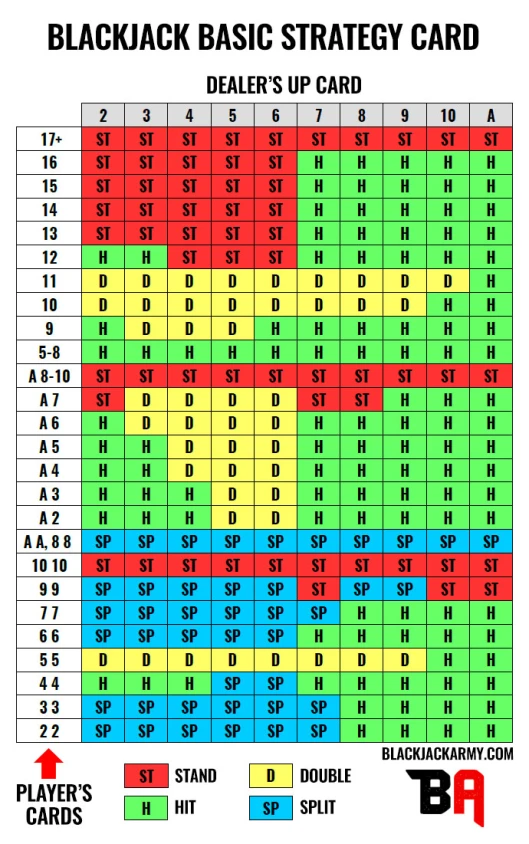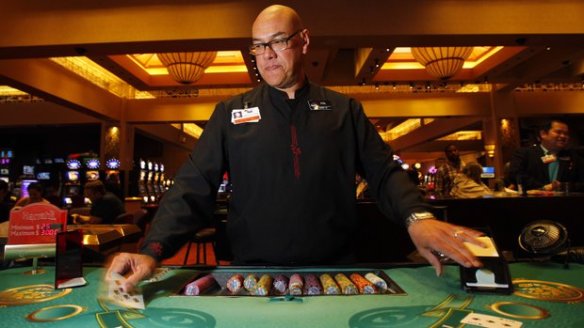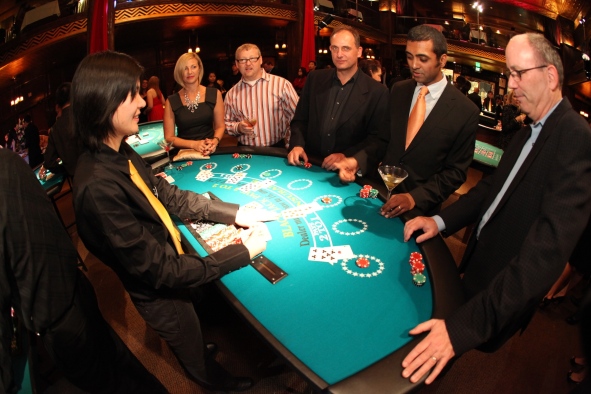Since we have introduced the game of blackjack at the end of last year, we can now talk about the winning strategies. A hand with an ace valued as 11 is called “soft”, meaning that the hand will not bust by taking an additional card; the value of the ace will become one to prevent the hand from exceeding 21. Otherwise, the hand is “hard”. Each blackjack game has a basic strategy, which is playing a hand of any total value against any dealer’s up-card, which loses the least money to the house in the long term. For example:

For details, like when to double-hard or double-soft, see: https://www.blackjackarmy.com/basic-blackjack-strategy
Blackjack’s house edge is usually between 0.5%–1% when players use basic strategy. Card counting can give the player an edge of up to 2% over the house.
A card counting system assigns a point score to each rank of a card. When a card is exposed, a counter adds the score of that card to a running total, the ‘count’. A card counter uses this count to make betting and playing decisions according to a table which they have learned. The count starts at 0 for a freshly shuffled deck for “balanced” counting systems. Unbalanced counts are often started at a value which depends on the number of decks used in the game.
The most common variations of card counting in blackjack are based on statistical evidence that high cards (especially aces and 10s) benefit the player more than the dealer, while the low cards, (3s, 4s, 6s, and especially 5s) help the dealer while hurting the player.
Basic card counting assigns a positive, negative, or zero value to each card value available. When a card of that value is dealt, the count is adjusted by that card’s counting value. Low cards increase the count as they increase the percentage of high cards in the remaining set of cards, while high cards decrease it for the opposite reason. For instance, the Hi-Lo system subtracts one for each dealt 10, Jack, Queen, King or Ace, and adds one for any value 2-6. Values 7-9 are assigned a value of zero and therefore do not affect the count. Here is a quick explanation of this system:
A lot of content for this post was shamelessly copied from other articles. In case of copyright violation, please ask me to delete this.


You must be logged in to post a comment.